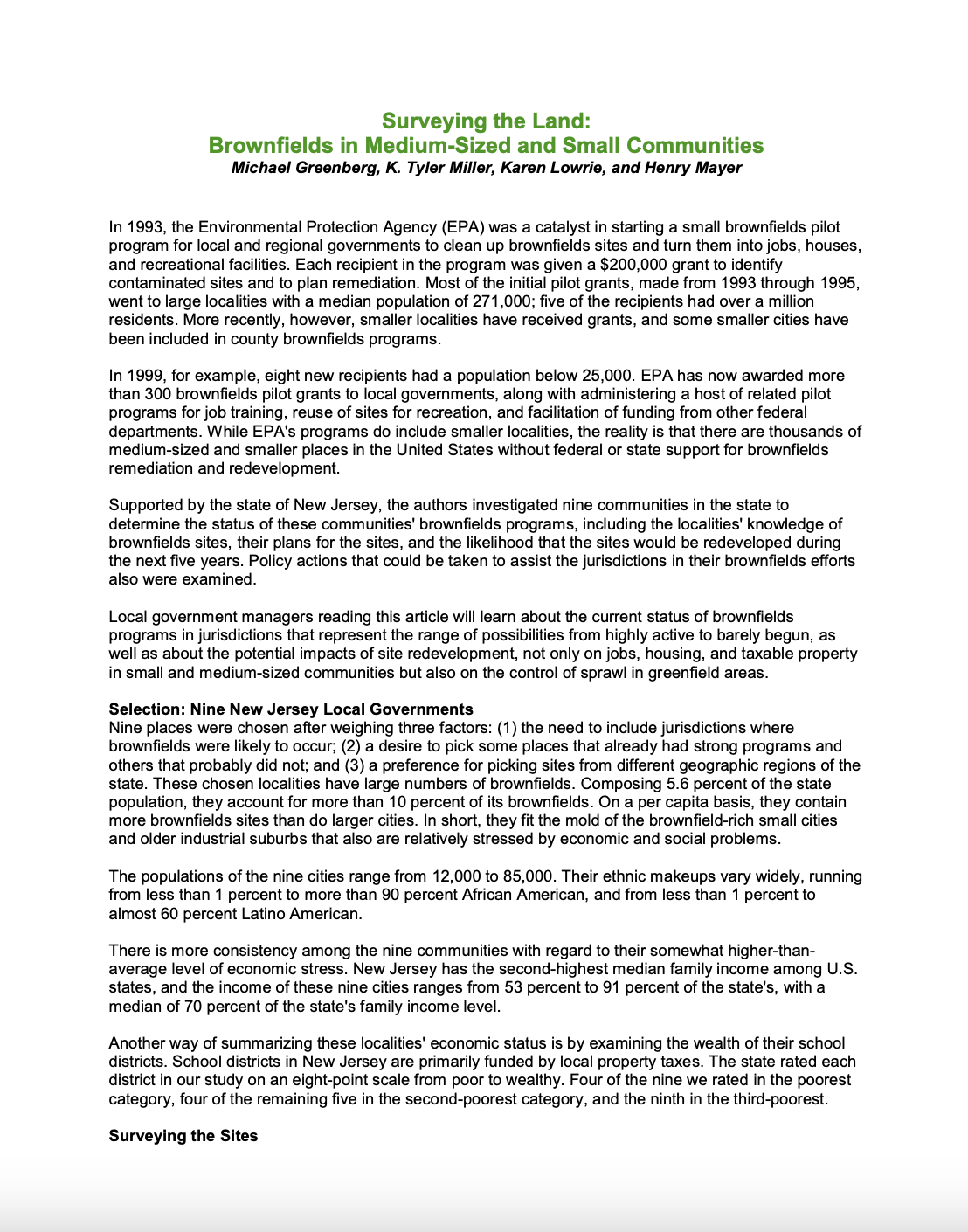In 1993, the Environmental Protection Agency (EPA) was a catalyst in starting a small brownfields pilot program for local and regional governments to clean up brownfields sites and turn them into jobs, houses, and recreational facilities. Each recipient in the program was given a $200,000 grant to identify contaminated sites and to plan remediation. Most of the initial pilot grants, made from 1993 through 1995, went to large localities with a median population of 271,000; five of the recipients had over a million residents. More recently, however, smaller localities have received grants, and some smaller cities have been included in county brownfields programs.
In 1999, for example, eight new recipients had a population below 25,000. EPA has now awarded more than 300 brownfields pilot grants to local governments, along with administering a host of related pilot programs for job training, reuse of sites for recreation, and facilitation of funding from other federal departments. While EPA’s programs do include smaller localities, the reality is that there are thousands of medium-sized and smaller places in the United States without federal or state support for brownfields remediation and redevelopment.
Supported by the state of New Jersey, the authors investigated nine communities in the state to determine the status of these communities’ brownfields programs, including the localities’ knowledge of brownfields sites, their plans for the sites, and the likelihood that the sites would be redeveloped during the next five years. Policy actions that could be taken to assist the jurisdictions in their brownfields efforts also were examined.
Local government managers reading this article will learn about the current status of brownfields programs in jurisdictions that represent the range of possibilities from highly active to barely begun, as well as about the potential impacts of site redevelopment, not only on jobs, housing, and taxable property in small and medium-sized communities but also on the control of sprawl in greenfield areas.
